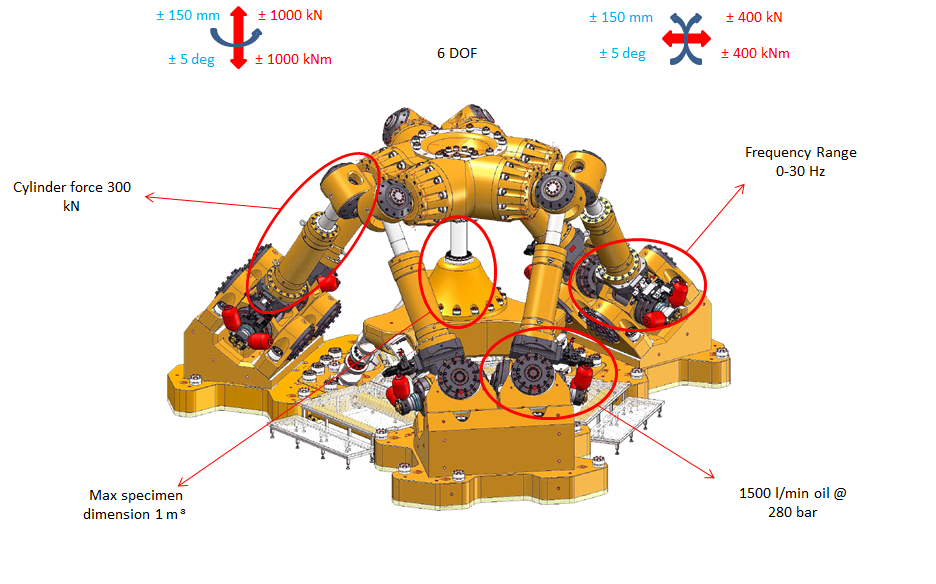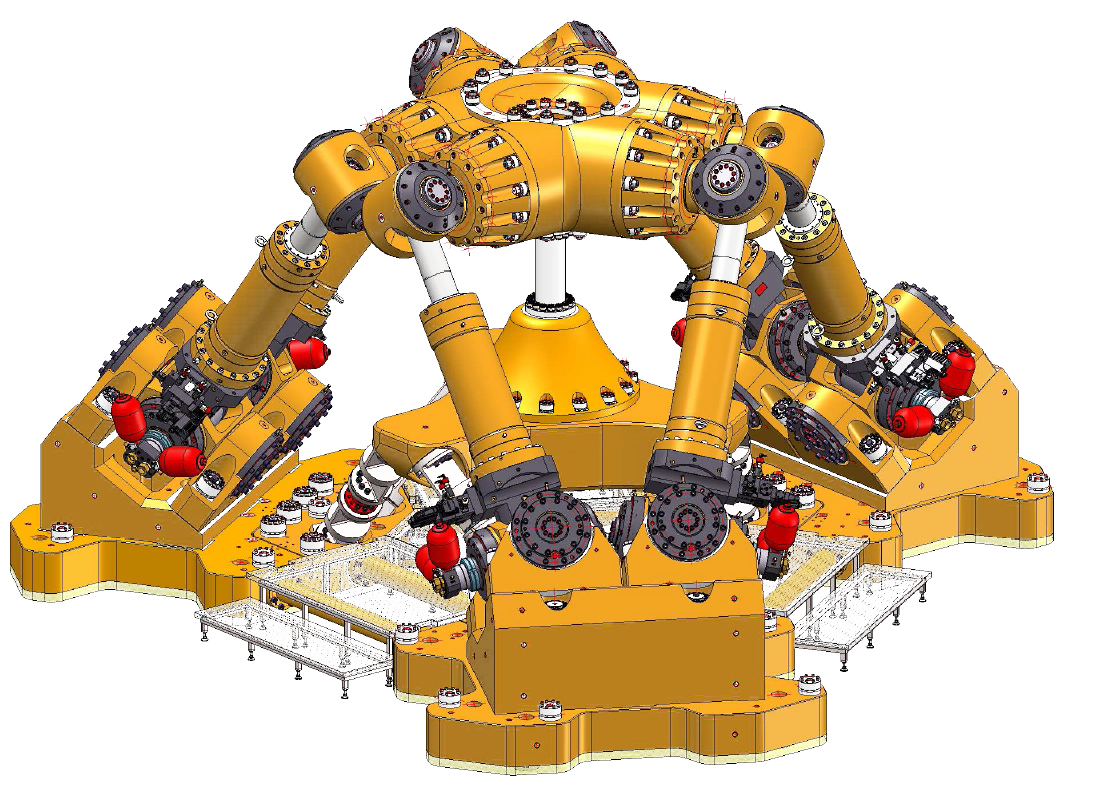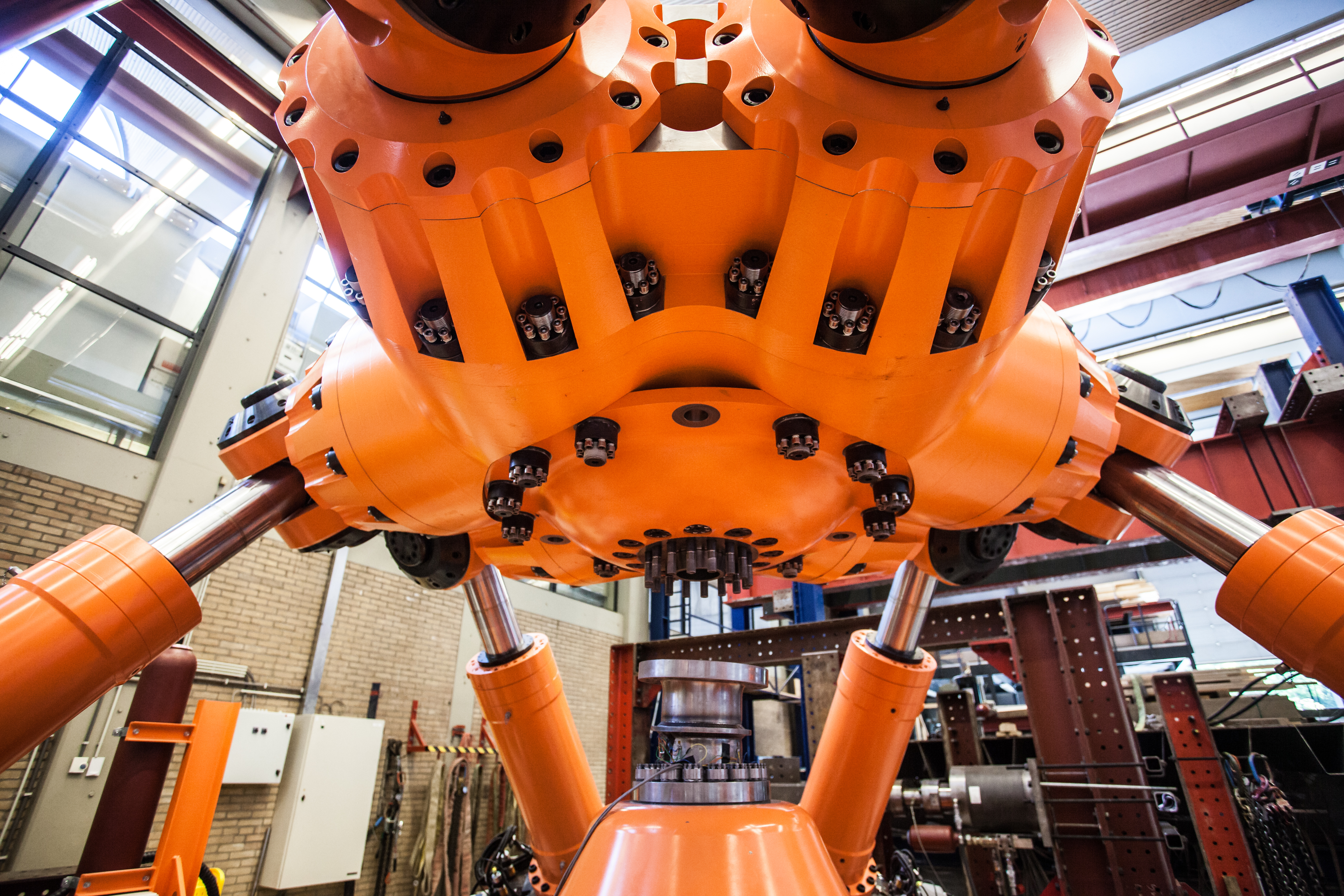Hexapod
Marine structures are subjected to large forces which are induced by ever changing weather conditions. Furthermore, the boundaries with respect to size and endurance of such structures are pushed more and more. This requires also more advanced technologies to investigate their resistance against aging and wear. For this purpose TU Delft has obtained a beautiful beast of a test machine: the Hexapod.
TU Delft - Hexapod
Hexapod is a new generation multiaxial test device for fatigue, ultimate strength and dynamic tests. The “one of its kind” machine has six independent hydraulic cylinders that enables to freely move the traverse, from which the motion is transferred to the specimen. Thanks to its particular geometry and construction, it can apply forces and moments independently in all the 6 spatial directions, opening new possibilities of testing. The real added value of the machine is given by its force and dimensions, that let it test real scale specimen up to 1m³, significantly reducing or erasing the scaling effect of the test. It can simulate every loading scenario and effectively shorten the testing time for fatigue test thanks to its maximum frequency of 30 Hz, simulating a 20 years lifetime of a structure in a few weeks. Almost every type of test can be planned thanks to its adaptable design, opening endless possibilities of test and research for your products.

Stroke platform in horizontal plane | ± 150 mm |
Stroke platform in vertical direction | ± 150 mm |
Rotation of platform | ± 5 deg |
Stroke of cylinder | 600 mm |
Force in vertical direction | ± 1000 kN |
Force in horizontal direction | ± 400 kN |
Moment of platform | ± 400 kNm (Mx, My); ± 1000 kNm (Mz) |
Frequency range | 0 - 30 Hz |
Velocity of platform motions (Based on hydraulic capacity of 250L/min, 280 bar) | 0.1 m/s |
Diameter platform | 2550 mm |
Distance between platform joints | 600 mm |
Diameter basis | 4070 mm |
Distance between basis joints | 770 mm |
Length of cylinder | 630 mm |
Contact







